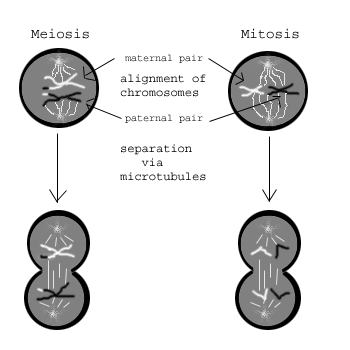Please wait while we process your payment
If you don't see it, please check your spam folder. Sometimes it can end up there.
If you don't see it, please check your spam folder. Sometimes it can end up there.
Please wait while we process your payment

By signing up you agree to our terms and privacy policy.
Don’t have an account? Subscribe now
Create Your Account
Sign up for your FREE 7-day trial
By signing up you agree to our terms and privacy policy.
Already have an account? Log in
Your Email
Choose Your Plan
Individual
Group Discount
Save over 50% with a SparkNotes PLUS Annual Plan!
 payment page
payment page
Purchasing SparkNotes PLUS for a group?
Get Annual Plans at a discount when you buy 2 or more!
Price
$24.99 $18.74 /subscription + tax
Subtotal $37.48 + tax
Save 25% on 2-49 accounts
Save 30% on 50-99 accounts
Want 100 or more? Contact us for a customized plan.
 payment page
payment page
Your Plan
Payment Details
Payment Summary
SparkNotes Plus
You'll be billed after your free trial ends.
7-Day Free Trial
Not Applicable
Renews July 16, 2025 July 9, 2025
Discounts (applied to next billing)
DUE NOW
US $0.00
SNPLUSROCKS20 | 20% Discount
This is not a valid promo code.
Discount Code (one code per order)
SparkNotes PLUS Annual Plan - Group Discount
Qty: 00
SparkNotes Plus subscription is $4.99/month or $24.99/year as selected above. The free trial period is the first 7 days of your subscription. TO CANCEL YOUR SUBSCRIPTION AND AVOID BEING CHARGED, YOU MUST CANCEL BEFORE THE END OF THE FREE TRIAL PERIOD. You may cancel your subscription on your Subscription and Billing page or contact Customer Support at custserv@bn.com. Your subscription will continue automatically once the free trial period is over. Free trial is available to new customers only.
Choose Your Plan
This site is protected by reCAPTCHA and the Google Privacy Policy and Terms of Service apply.
For the next 7 days, you'll have access to awesome PLUS stuff like AP English test prep, No Fear Shakespeare translations and audio, a note-taking tool, personalized dashboard, & much more!
You’ve successfully purchased a group discount. Your group members can use the joining link below to redeem their group membership. You'll also receive an email with the link.
Members will be prompted to log in or create an account to redeem their group membership.
Thanks for creating a SparkNotes account! Continue to start your free trial.
We're sorry, we could not create your account. SparkNotes PLUS is not available in your country. See what countries we’re in.
There was an error creating your account. Please check your payment details and try again.
Please wait while we process your payment

Your PLUS subscription has expired
Please wait while we process your payment
Please wait while we process your payment

Meiotic Division I
In this section, we will discuss the events of the first meiotic division. As we have already described, meiosis comprises two cellular divisions, meiosis I and meiosis II. We have already introduced the main event occurring in prophase I, genetic reassortment. Here we will discuss all of meiosis I, beginning with prophase I.
During prophase 1, when genetic reassortment takes place, the sister chromatids behave as a singular unit. The chromosome pair is identical except for the small region where crossover occurred. Because the very important genetic reassortment event occurs during this phase, prophase 1 can last a very long time: up to 90% of the total duration of meiosis. Other than the genetic crossover event that takes place during prophase 1, the following phases of meiosis I proceed similarly to those of mitosis.
After prophase 1, cells enter prometaphase 1. During this phase, the nuclear membrane breaks down, allowing microtubules access to the chromosomes. In this phase, the chromosomes are held through their chiasma instead of through the centromere as in mitosis. During the next phase, metaphase 1, the maternal and paternal homologous pairs of chromosomes (with crossover regions) align at the center of the cell via microtubules, as in mitotic metaphase.
In anaphase 1, a slightly different event than that of mitotic anaphase occurs. Instead of sister chromatids being pulled apart towards opposite poles as in anaphase, during anaphase 1, the entire maternal homologous pair is pulled to the opposite end as the paternal homologous pair.

During telophase 1 the chromosomes arrive at the poles, decondense, and nuclear membranes re-form around them. In the final stage, the cell physically divides, as in mitotic cytokinesis. The result of the first cell division is two independent cells. One cell contains the maternal homologous pair, or sister chromatids, with a small segment of the paternal chromosome from crossover. The other cell contains the paternal homologous pair with a small segment of the maternal chromosome. Despite the small region of crossover, the sister chromatids are still very similar and each cell at this point contains a diploid amount of DNA.
Although diploid cells result from meiosis I, these products are different from those of mitosis because both members of the diploid pair derive from either the maternal or paternal source with the exception of a small section. In mitosis, the cellular division separates sister chromatids and results in diploid cells containing one maternal and one paternal copy in each diploid pair.
Please wait while we process your payment

